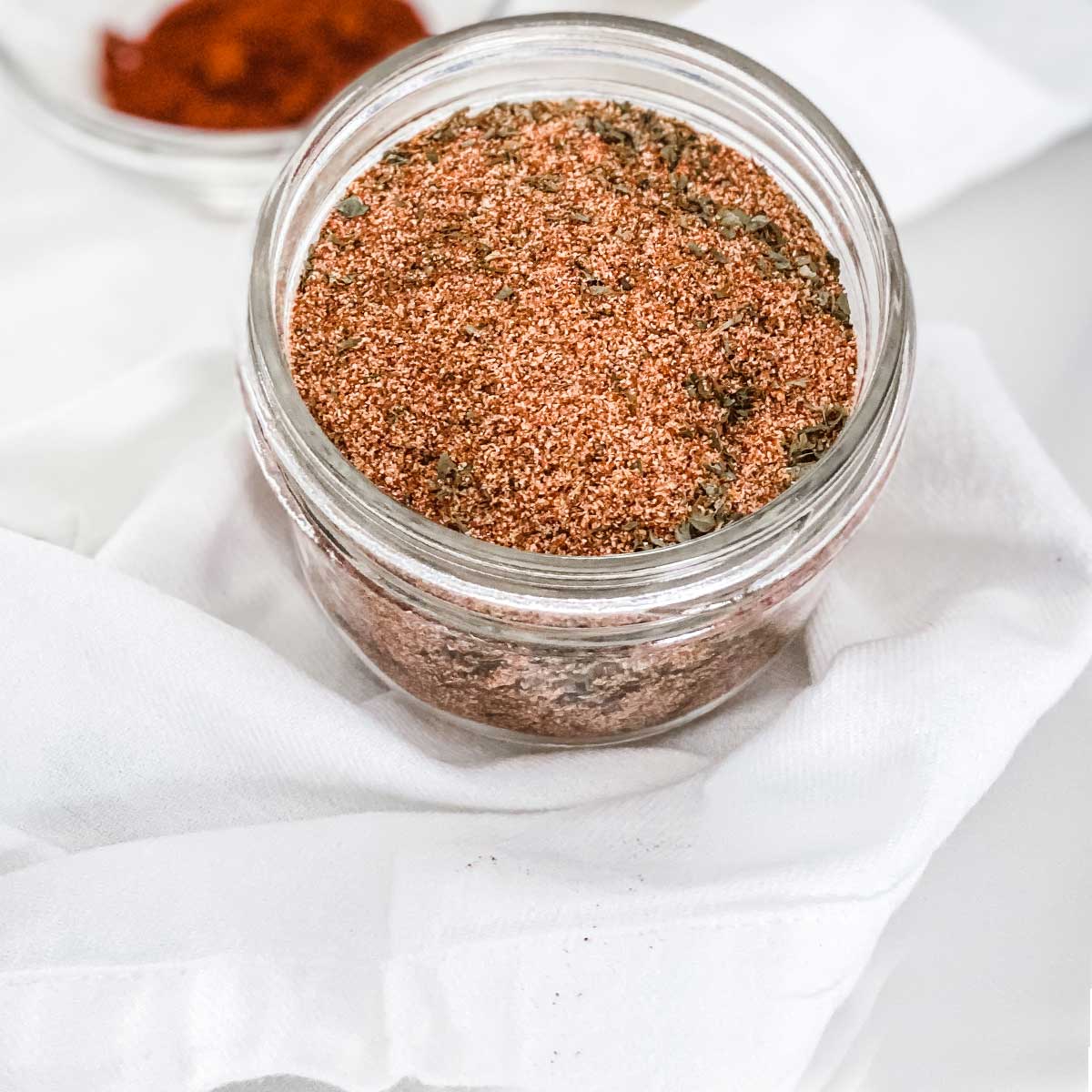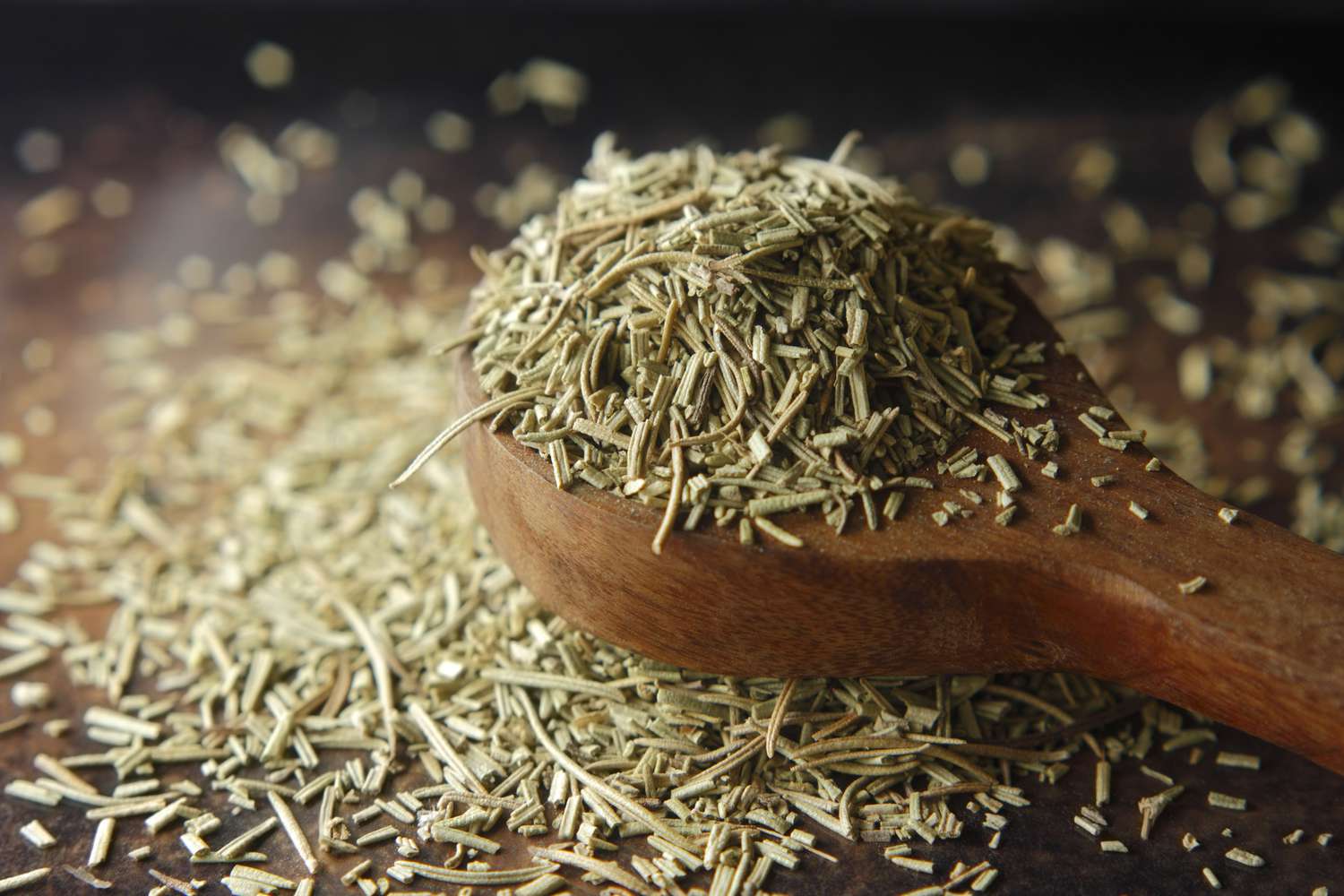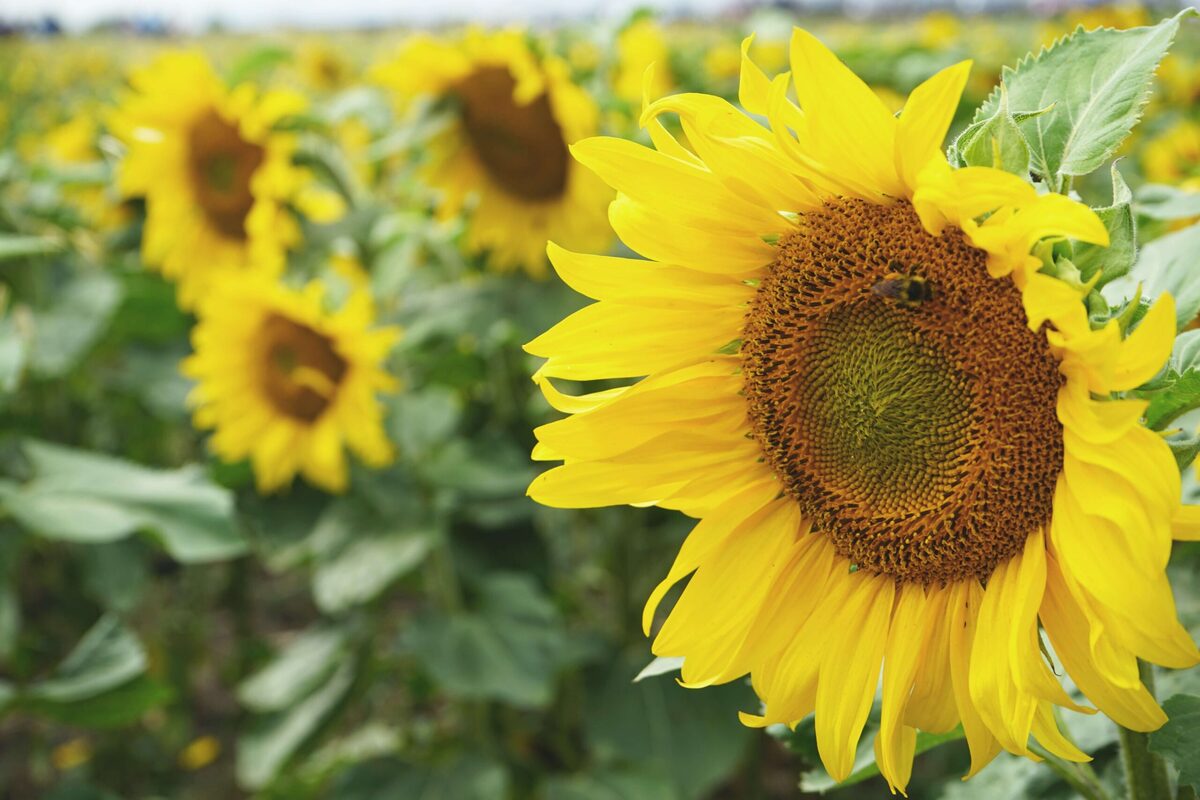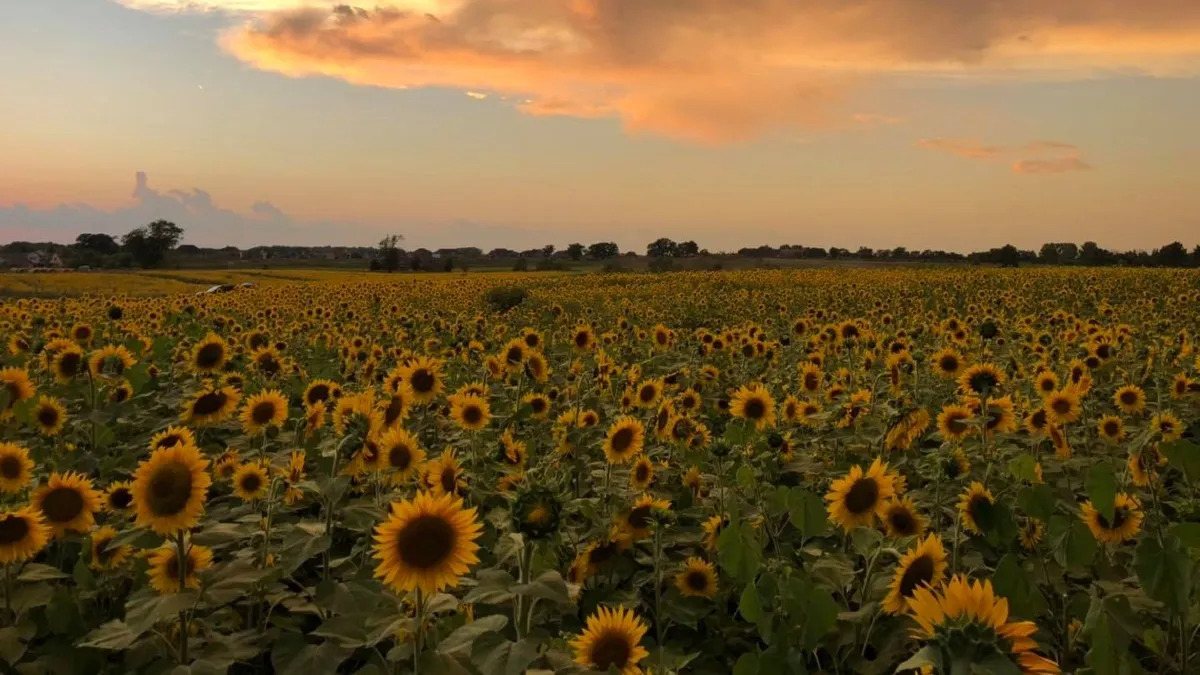Home>Gardening Techniques>Seasonal Gardening>When Is Planting Season
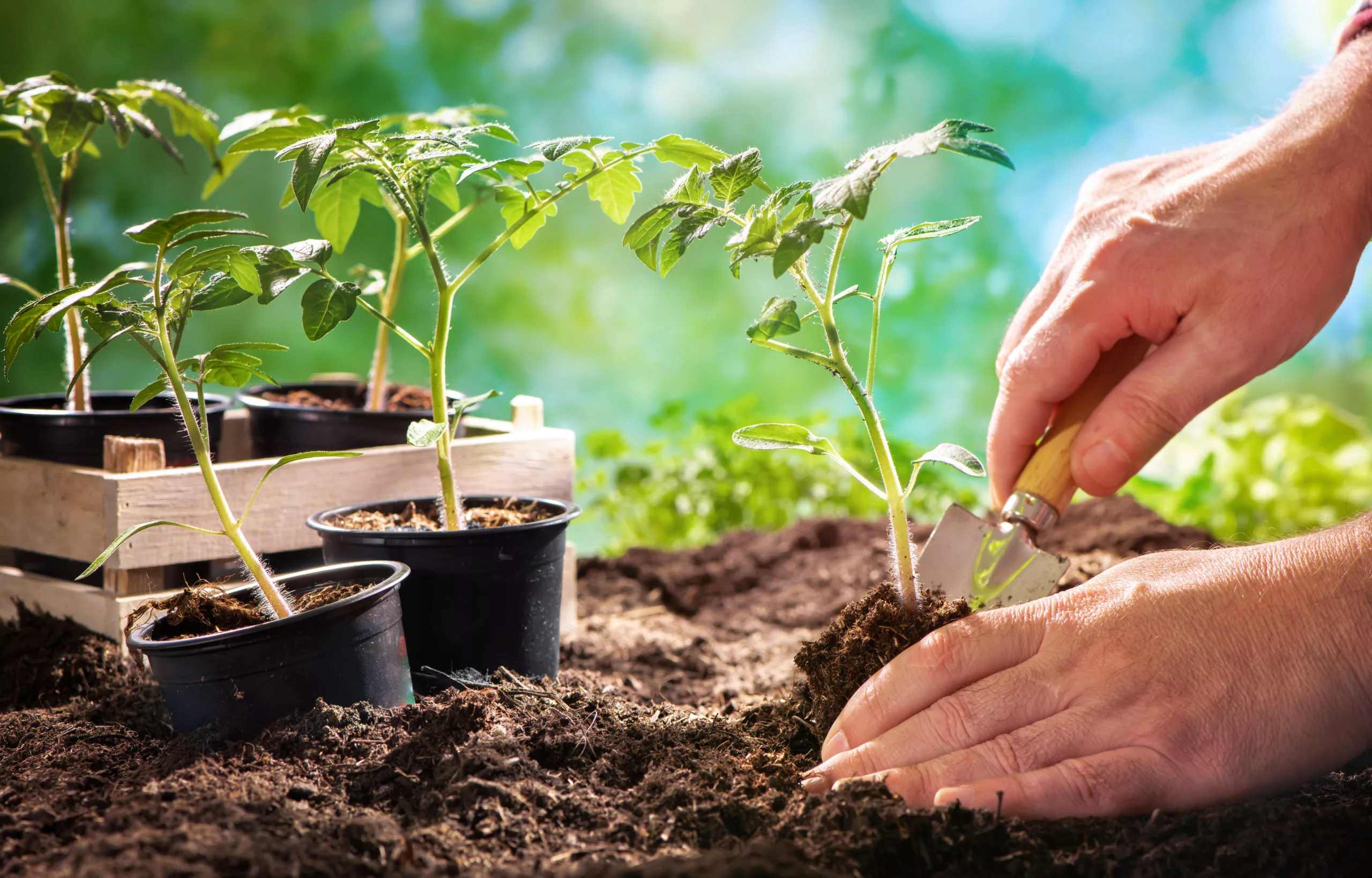

Seasonal Gardening
When Is Planting Season
Modified: January 22, 2024
Discover the best time to start your seasonal gardening! Learn when planting season begins and get expert tips for successful gardening.
(Many of the links in this article redirect to a specific reviewed product. Your purchase of these products through affiliate links helps to generate commission for Chicagolandgardening.com, at no extra cost. Learn more)
Table of Contents
Introduction
Welcome to the world of seasonal gardening, where the wonders of nature unfold throughout the year. Seasonal gardening is an art that involves planting and nurturing different crops at specific times of the year to optimize growth and harvests. Whether you’re a seasoned gardener or just starting out, understanding the planting seasons is crucial to achieving a successful and bountiful garden.
Each plant has its own ideal conditions for growth, and planting during the appropriate season ensures that your plants receive the necessary sunlight, temperature, and moisture to thrive. By aligning your gardening activities with the natural rhythm of the seasons, you can optimize your yield and enjoy a beautiful and healthy garden.
In this article, we will explore the factors affecting the planting season, including climate and weather conditions, frost dates, soil temperature, and daylength. We will also discuss the best planting seasons for various crops, such as spring, summer, fall, and even winter planting. So, let’s dig in and discover the secrets of seasonal gardening!
Factors Affecting Planting Season
Several key factors influence the optimal planting season for different crops. Understanding these factors will help you make informed decisions and ensure successful growth in your garden.
Climate and Weather Conditions: The climate of your region plays a significant role in determining the planting season. Different plants have different temperature and moisture requirements. Some plants thrive in warm and humid conditions, while others prefer cooler temperatures. It’s essential to consider the average temperature, rainfall patterns, and overall climate of your area when planning your planting season.
Frost Dates: Frost can be detrimental to many plants. Understanding the average date of the last spring frost and the first fall frost in your area is essential. Frost-sensitive plants should be planted after the risk of frost has passed, while cold-tolerant plants can be planted earlier in the season.
Soil Temperature: Soil temperature is critical for successful seed germination and root development. Different plants have specific soil temperature requirements for optimal growth. It’s important to take soil temperature into account before planting. Using a soil thermometer can help you determine if the soil is warm enough for planting.
Daylength and Sun Exposure: The length of daylight and sun exposure can influence plant growth and development. Some plants require long days to flower and fruit, while others prefer shorter days. Additionally, certain plants thrive in full sun, while others prefer partial shade. Understanding the light requirements of your crops will help you determine the best planting season.
By considering these factors, you can determine the most favorable planting season for your crops. However, it’s important to note that these factors may vary depending on the specific plant variety and local conditions. Consulting local gardening resources or experts can provide further guidance specific to your region.
Climate and Weather Conditions
The climate and weather conditions of your region play a crucial role in determining the planting season for your garden. Understanding the unique characteristics of your local climate is essential to ensure the success of your plants.
One key aspect to consider is the average temperature throughout the year. Different plants have different temperature preferences for optimal growth. Some plants thrive in warm and tropical climates, while others prefer cooler temperatures. By understanding the temperature range that your desired crops prefer, you can plan your planting season accordingly.
Additionally, it’s important to consider the rainfall patterns in your region. Some plants require consistent moisture, while others are more drought-tolerant. Knowing the average rainfall in your area can help you determine the appropriate planting season and irrigation needs for your crops.
Extreme weather events, such as hurricanes, tornadoes, or heatwaves, can also influence the planting season. These events can disrupt the growth and development of plants and cause damage to your garden. Monitoring local weather forecasts and being prepared for such events is crucial to protect your plants and adjust your planting plans accordingly.
Microclimates are another important consideration. Even within a single region, there can be variations in temperature, sunlight, and moisture levels. Paying attention to microclimates in your garden can help you strategically plant crops that have specific temperature or light requirements, such as utilizing warmer areas for heat-loving plants or creating shade for those that prefer cooler conditions.
Lastly, it’s important to stay informed about any seasonal weather patterns that may impact your garden. For example, if your area experiences a dry season or a particularly rainy season, you may need to adjust your planting schedule or irrigation practices to accommodate these changes.
By closely observing and understanding the climate and weather conditions of your region, you can make informed decisions about the most suitable planting season for your crops. This knowledge will help you create an environment that promotes healthy growth and ensures a successful harvest.
Frost Dates
Frost dates are a crucial factor to consider when determining the planting season for your garden. Frost can be detrimental to many plants, especially those that are sensitive to cold temperatures.
The average date of the last spring frost and the first fall frost in your region is important to know. The last spring frost date indicates when the risk of frost has significantly decreased, allowing for the safe planting of frost-sensitive crops. On the other hand, the first fall frost date marks the point when the growing season is coming to an end, indicating that it’s time to harvest the remaining crops and prepare for colder weather.
Knowing the frost dates helps you plan your planting schedule effectively. Frost-sensitive crops, such as tomatoes or peppers, should be planted after the risk of frost has passed in the spring. This prevents the young plants from being damaged or killed by late frosts. Cold-tolerant crops, such as kale or broccoli, can be planted earlier in the spring, as they can withstand cooler temperatures.
In the fall, it’s important to keep an eye on the first fall frost date. This date gives you an idea of when you should start harvesting and when to protect crops that can tolerate light frost. Some cool-season crops, such as carrots or Brussels sprouts, can even benefit from a light frost, as it enhances their flavor.
While frost dates provide a general guideline, it’s important to note that they can vary from year to year. Factors like microclimates, altitude, and weather patterns may influence the specific timing and severity of frost in your area. Therefore, it’s advisable to monitor local weather reports and consult gardening resources for more accurate and updated information on frost dates in your region.
Taking frost dates into account when planning your planting season helps ensure that your crops have a favorable environment for growth and minimizes the risk of frost damage. By aligning your planting activities with the frost dates, you can maximize your garden’s productivity and protect your plants from the dangers of late frosts.
Soil Temperature
Soil temperature plays a crucial role in the success of plant germination and root development. Different plants have specific temperature requirements for optimal growth, and understanding soil temperature is essential when determining the planting season for your garden.
Before sowing seeds or transplanting seedlings, it’s important to check the soil temperature. This can be done using a soil thermometer, which measures the temperature at various depths in the soil. Different plants have different temperature preferences, so it’s important to know the specific temperature requirements for your chosen crops.
Generally, most warm-season crops prefer soil temperatures between 60°F and 85°F (15°C to 29°C). These include popular vegetables like tomatoes, peppers, cucumbers, and beans. Planting these crops in cool soil can lead to slow germination and poor growth. Waiting for the soil to warm up to the appropriate temperature ensures better seed germination and faster growth.
Cool-season crops, on the other hand, prefer soil temperatures between 40°F and 70°F (4°C to 21°C). Examples of cool-season crops are lettuce, spinach, kale, and carrots. These crops can tolerate cooler temperatures and may even bolt or become bitter if exposed to excessive heat.
When planting in the garden, it’s important to monitor the daily soil temperature rather than relying only on air temperature. Soil temperature tends to be more stable and changes more slowly than air temperature, so it provides a more accurate indicator of the conditions plants experience.
Soil moisture is also closely linked to soil temperature. Wet soil takes longer to warm up compared to dry soil. If the soil is too wet, it’s advisable to wait until it dries out before planting to avoid potential complications and issues for your plants.
By paying attention to soil temperature, you can give your plants the best possible start. Planting at the right soil temperature ensures optimal seed germination, root development, and overall growth for your crops. Monitoring soil temperature will help you make informed decisions about the timing of your planting activities and set the stage for a successful gardening season.
Daylength and Sun Exposure
The length of daylight and sun exposure are important factors to consider when determining the planting season for your garden. Plants have different light requirements for their growth and development, and understanding these requirements is essential for successful gardening.
Some plants, known as long-day plants, require longer daylight periods to initiate flowering and fruiting. These plants typically thrive in regions with longer summer days. Examples of long-day plants include strawberries, lettuce, and spinach. It’s best to plant these crops during the spring and early summer when daylight hours are increasing.
On the other hand, short-day plants require shorter daylight periods to trigger flowering. These plants do well in areas with shorter summer days or when planted later in the season. Examples of short-day plants include onions, radishes, and chrysanthemums. These crops are typically planted during the late summer or fall when days are getting shorter.
There are also day-neutral plants that are not influenced by day length and can be planted throughout the growing season. Examples of day-neutral plants include tomatoes, beans, and peppers. These crops are more flexible in terms of planting time, but they still require adequate sunlight for optimal growth.
Sun exposure is another crucial factor. Most vegetables and flowering plants require full sun, which means at least six hours of direct sunlight per day. Full sun exposure promotes photosynthesis and ensures healthy growth and abundant blooms or fruit production. It’s important to choose planting locations in your garden that receive ample sunlight throughout the day to give your plants the best chance of success.
However, some plants can tolerate partial shade, which means they can thrive with less direct sunlight. These plants are often grown in areas with dappled shade or areas that receive only a few hours of sunlight per day. Examples of crops that can handle partial shade include lettuce, kale, and certain herbs like mint or cilantro.
By understanding the light requirements of your crops, you can plan your planting season accordingly. Be mindful of the length of daylight and the sun exposure in your garden when deciding when and where to plant different crops. Providing the right amount of light will promote healthy growth and maximize the productivity of your garden.
Planting Season for Various Crops
Understanding the ideal planting season for different crops is essential for a successful and productive garden. While specific planting dates may vary depending on your region and local conditions, the following guidelines can help you plan your garden and maximize your harvest.
Spring Planting: Spring is a time of renewal and growth, making it the perfect season for planting a variety of crops. Cool-season vegetables like lettuce, spinach, peas, carrots, and radishes can be planted as soon as the soil can be worked and the danger of frost has passed. Warm-season crops like tomatoes, peppers, cucumbers, and beans are typically started indoors from seeds or transplants and then gradually hardened off and planted in the garden when temperatures have warmed up. Spring is also an excellent time to establish perennial herbs and flowers.
Summer Planting: Summer is the peak growing season, and there are plenty of warm-season crops that thrive in the heat. This is the time to plant heat-loving vegetables like corn, squash, zucchini, melons, and pumpkins. These crops require full sun and warm soil to flourish. Additionally, late-season crops such as beans, cucumbers, and herbs can be replanted for a continuous harvest throughout the summer.
Fall Planting: Fall is a season of transition, and it presents an opportunity to extend your growing season. Cool-season crops like kale, broccoli, cauliflower, Brussels sprouts, and cabbage perform exceptionally well in fall’s cooler temperatures. These crops can be planted in late summer for a fall harvest. Additionally, root vegetables such as beets, turnips, carrots, and radishes can be sown directly in the garden for a late-season harvest.
Winter Planting: Winter gardening offers a unique opportunity to grow cold-tolerant crops and enjoy fresh produce during the colder months. Depending on your climate, you can plant crops like lettuce, spinach, kale, Swiss chard, and other hardy greens in protected environments such as cold frames, hoop houses, or even indoors. These crops can withstand frost and continue to grow slowly throughout the winter, providing you with a fresh and nutritious harvest.
It’s important to note that these are general guidelines, and planting dates may vary depending on your specific location and climate. Factors such as frost dates, soil temperature, and local weather patterns should be taken into consideration when determining the best planting season for your crops. Consulting local gardening resources or experienced gardeners in your area can provide valuable insights and recommendations tailored to your specific region.
By aligning your planting activities with the appropriate seasons for each crop, you can optimize growth, minimize pest and disease issues, and enjoy a bountiful harvest from your garden.
Spring Planting
Spring is a season of new beginnings and vibrant growth, making it an ideal time for planting a wide range of crops. As the weather begins to warm up and the threat of frost diminishes, gardeners eagerly prepare their gardens for the upcoming growing season.
Cool-season vegetables are the stars of early spring planting. These crops thrive in cooler temperatures and can tolerate light frosts. Lettuce, spinach, kale, peas, carrots, and radishes are all popular choices for spring planting. These vegetables can be directly sown into the garden as soon as the soil can be worked, typically when it reaches a temperature of about 45°F (7°C).
Warm-season crops like tomatoes, peppers, cucumbers, beans, and squash are typically started indoors from seeds or purchased as transplants. The seeds are sown in pots or seed trays several weeks before the last expected frost date to allow ample time for germination and growth. Once the danger of frost has passed and the soil has warmed up, usually around mid to late spring, these seedlings can be transplanted into the garden.
When planning your spring planting, it’s important to consider the specific requirements of each crop. Some plants prefer full sun, while others can tolerate partial shade. Ensure that your garden beds receive sufficient sunlight for optimal growth. Additionally, pay attention to spacing requirements, as overcrowding can lead to competition for nutrients and increased risk of pest and disease issues.
Proper soil preparation is key to successful spring planting. Before planting, it’s essential to amend your soil with organic matter, such as compost, to improve its fertility and drainage. Remove any weeds or debris from the planting area to prevent competition and create a clean environment for your crops to thrive.
Regular watering is crucial during the spring season, especially as temperatures begin to rise. Keep the soil evenly moist, but avoid overwatering, as this can lead to root rot and other water-related problems. Mulching around plants can help conserve moisture, suppress weed growth, and maintain more consistent soil temperatures.
Spring planting sets the stage for a fruitful growing season, allowing you to enjoy a continuous harvest of fresh and flavorful vegetables. As the days grow longer and the temperatures rise, your garden will burst with life and you’ll be rewarded with a bountiful harvest of your favorite spring crops.
Summer Planting
Summer is a season of abundant sunshine and warmth, creating the perfect conditions for a wide range of crops to thrive. As temperatures rise, gardeners eagerly prepare their gardens for the peak growing season.
Warm-season crops take center stage during the summer months. These heat-loving vegetables and fruits require full sun and warm soil to flourish. Some popular choices for summer planting include tomatoes, peppers, cucumbers, zucchini, melons, and beans.
Tomatoes are a favorite among gardeners, and summer is the prime time for planting these delicious fruits. Choose from various varieties, such as cherry tomatoes, beefsteak tomatoes, or heirloom varieties, and provide them with a sunny spot in your garden. Tomato plants benefit from sturdy supports, such as stakes or cages, to keep the vines upright and the fruit off the ground.
Peppers, both sweet and hot, also thrive in the heat of summer. From bell peppers to jalapeños, these plants appreciate full sun and well-draining soil. Start pepper seeds indoors several weeks before the last frost date to give them a head start, or purchase transplants from a local nursery. Plant them in the garden once all danger of frost has passed.
Cucumbers are another popular summer crop, known for their refreshing taste and versatility. These vining plants can be grown on trellises or allowed to sprawl on the ground, depending on the space available in your garden. Regular watering is essential for the development of crisp and juicy cucumbers.
Summer squash and zucchini are fast-growing crops that produce abundant yields. These prolific plants need ample space to spread out and regular harvesting to promote continuous flowering and fruit production. Be vigilant in checking for ripe squash, as they can become oversized and less flavorful if left on the plant for too long.
Melons, such as watermelons and cantaloupes, are a staple of summer gardens. These heat-loving fruits require a long growing season and plenty of sun to produce sweet and juicy flesh. Give melon plants enough room to sprawl and provide them with consistent water throughout the growing season.
Beans, both bush and pole varieties, are perfect for summer planting. From green beans to runner beans, these crops offer a bountiful harvest and add nitrogen to the soil through their root nodules. To ensure a continuous supply of fresh beans, sow seeds successively every two weeks.
Remember to provide adequate water for your summer crops, as high temperatures can cause rapid moisture evaporation from the soil. Water deeply and at the base of the plants to encourage strong root growth. Applying mulch around the plants can help conserve moisture and suppress weed growth.
Summer planting brings the joy of abundant harvests and the satisfaction of enjoying homegrown produce at its peak. With proper care and attention, your summer garden will thrive, providing you with a flavorful and nourishing bounty throughout the season.
Fall Planting
Fall is a season of harvest, but it’s also an opportune time for planting certain crops. As the temperatures begin to cool down and the days shorten, gardeners have the chance to extend their growing season and enjoy a bountiful autumn harvest.
Cool-season crops thrive in the mild temperatures of fall. These vegetables can handle cooler nights and provide fresh produce well into the colder months. Some popular choices for fall planting include kale, broccoli, cauliflower, Brussels sprouts, and cabbage.
Kale is a nutrient-rich leafy green that thrives in cooler weather. It can withstand light frosts and even become sweeter after exposure to cold temperatures. Plant kale in late summer for a fall harvest, and enjoy their flavorful leaves in salads, smoothies, or sautéed dishes.
Broccoli and cauliflower are cool-season vegetables that appreciate the milder conditions of fall. These crops are typically started from transplants and should be planted in late summer to early fall. They require adequate spacing and regular watering to produce compact heads before the onset of freezing temperatures.
Brussels sprouts are a favorite fall crop that adds a touch of whimsy to the garden. These plants form small cabbage-like buds along their tall stalks. They require a longer growing season, so it’s best to start them from transplants in mid to late summer. Once the sprouts begin to form, they can be harvested selectively as needed.
Cabbage is a versatile vegetable that comes in different varieties, from green to red to savoy. It can be enjoyed raw in salads or cooked in a variety of dishes. Cabbage plants can tolerate cooler temperatures and should be started from seed or transplants in late summer for a fall harvest.
Root vegetables like beets, turnips, carrots, and radishes can also be planted in the fall. These crops can handle light frosts and offer a fresh and flavorful harvest as the temperatures cool down. Sow the seeds directly into the garden, providing them with adequate spacing and regular watering for optimal growth.
When planting in the fall, it’s important to keep an eye on the first expected frost date in your area. Be prepared to protect your crops if frost is forecasted by using frost blankets or row covers to extend the growing season. Some cool-season crops, like kale or Brussels sprouts, can even taste sweeter after exposure to light frost.
The cooler temperatures and fewer pests in the fall make it an ideal time for gardening. Fall planting allows you to enjoy a second harvest and maximize your garden’s productivity. With proper care and attention, your fall crops will thrive, providing a delicious and homegrown bounty throughout the autumn months.
Winter Planting
While winter may seem like a dormant period for gardening, it actually provides a unique opportunity to continue growing and harvesting fresh produce. With a little planning and preparation, you can enjoy a thriving garden even during the coldest months.
Cold-tolerant crops are the stars of winter planting. These hardy vegetables and herbs can withstand the chilly temperatures and even improve in flavor after exposure to cold conditions. Some popular choices for winter planting include lettuce, spinach, kale, Swiss chard, and a variety of herbs.
Lettuce and spinach are excellent choices for winter salads. These leafy greens can be grown in containers, raised beds, or cold frames to protect them from harsh weather. Plant seeds or transplants in late summer or early fall to allow them to establish before winter sets in. Harvest outer leaves as needed, and these crops will continue to provide fresh greens throughout the season.
Kale is a nutrient-packed superfood that thrives in winter climates. Its flavor improves after exposure to frost, making it a great addition to winter soups, stir-fries, and smoothies. Start kale plants from seeds or transplants in late summer or early fall, and they will grow steadily, even in cold temperatures.
Swiss chard is another cold-tolerant green that can withstand winter conditions. With its colorful stems and tender leaves, Swiss chard adds beauty and nutrition to winter meals. Plant it in early fall to allow sufficient time for growth before the first frost. Harvest the outer leaves regularly to encourage continuous production.
Herbs like rosemary, thyme, sage, and parsley can be grown in containers or protected areas during the winter months. These herbs can add flavor and aroma to your winter dishes and continue to thrive with proper care. Plant them in well-draining soil and place them in a sunny spot for optimal growth.
When planting in winter, it’s important to protect your crops from extreme weather conditions. Cold frames, hoop houses, or row covers can provide insulation and protect plants from frost. Adding a layer of mulch around the base of the plants can further protect the root systems from freezing temperatures.
Watering is also crucial during winter planting. Although the soil may not dry out as quickly as in summer, it’s important to regularly check the moisture level and water when necessary. Be mindful not to overwater, as excessive moisture can lead to root rot in cooler temperatures.
Winter gardening offers a rewarding and unique experience. By planting cold-tolerant crops and providing them with the necessary protection and care, you can continue to enjoy fresh and nutritious produce throughout the winter months. Embrace the wonders of winter gardening and let your green thumb flourish year-round.
Conclusion
Seasonal gardening is a rewarding journey that allows you to connect with nature, cultivate your own food, and enjoy the beauty of the changing seasons. By understanding the factors that affect the planting season, such as climate, frost dates, soil temperature, daylength, and sun exposure, you can make informed decisions and optimize the growth and productivity of your garden.
Spring planting sets the stage for the growing season, with cool-season and warm-season crops taking center stage. Summer planting brings the joy of abundant harvests, as the heat-loving vegetables thrive in the long, sunny days. Fall planting extends the growing season as cool-season crops thrive in the mild temperatures of autumn. And even in winter, with proper planning and protection, you can continue growing and harvesting cold-tolerant crops.
As you embark on your seasonal gardening journey, remember to observe the specific requirements of each crop and adjust your planting schedule accordingly. Pay attention to the local frost dates, soil temperature, and daylight hours to ensure the best conditions for your plants to thrive. Adapt your gardening techniques to the unique characteristics of your region and microclimates within your garden.
While this article provides a comprehensive overview of seasonal gardening, it’s important to remember that gardening is a hands-on experience that involves experimentation, learning from successes and failures, and adapting to the unique conditions of your garden. Connect with local gardening resources, experienced gardeners, and your own observations to tailor your gardening practices to your specific location.
Embrace the seasonal rhythm of nature, the joy of nurturing plants, and the satisfaction of harvesting your own fresh and flavorful crops. Enjoy the journey of seasonal gardening as you watch your garden transform with each passing season, and relish in the bountiful rewards it brings to your table and your soul.
